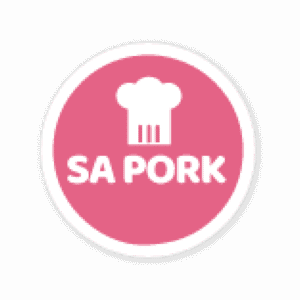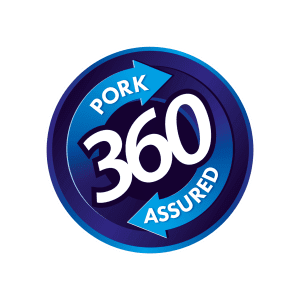By Pranisha Soma and Lorinda Frylinck, ARC-Animal Production Institute, Irene
One of the major objectives in animal production has been to increase meat yield of livestock species. For the growing health conscious consumer the production of leaner pigs is necessary and for the production of processed meat such as sausage and bacon a higher percentage fat carcass is required.
There are about 350 commercial pork producers in South Africa, and about 50% of their production is used for processing products.
There is on the other hand great scope in South Africa to increase pork production and to reach new consumers of pork.
The South African pig industry constitutes about 0.3% of the world pig population and in context of the South African agricultural sector, it contributes less than 5% to the primary agricultural sector.
South Africa is ranked third in Africa, with the largest pig population found in China, with the United States of America second. Pork is produced throughout South Africa in all nine provinces.
Piggeries with highly regulated housing systems are comparable to international pig farming systems.
The production of pork in South Africa supercedes its consumption. Consumers have become more health conscious than before. Pork was considered to contain excess fat and was avoided by many consumers. The global meat industry responded to consumer demands and adopted new genetic technologies to produce leaner pigs.
Advances
With advances in genetic technology, the IGF2 gene was identified to assist in selecting animals with the lean or fat allele.
Several international studies have reported the presence of the gene on the distal tip of chromosome 2 (SSC2) in pigs that without question has effects on lean meat content.
These studies also confirmed that the QTL (quantitative trait loci) was imprinted/ coded and paternally expressed. The effects on muscle mass and fat deposition were major and of the same magnitude as that reported for the halothane gene (ryanodine receptor 1 gene).
This single nucleotide mutation adds approximately 3-4% more lean meat to pigs. The link of the mutation with the desired phenotype is 100%, regardless the origin of the pedigree. It allows for the selection of carcass leanness based directly on the functional nucleotide at the DNA level.
Leaner carcases
The demand for leaner carcasses by the meat packers and consumers may be in conflict with longevity of sows and may have implications on the replacement costs of sows in breeding programmes.
The IGF2 gene can provide a possible solution to this conflict, due to the imprinting nature of the gene where sows can be selected for the Gpat allele to enhance productivity and sow fertility. Literature has also indicated that there are other genes involved in carcass leanness but the test for the IGF2 gene is a leading, novel, diagnostic test already available to assist in selection programmes.
Meat quality can differ to some extent between breeds and genotypes. Therefore, the relationship between performance traits and carcass conformation and meat quality is a critical issue in animal production.
At heavier weights, the quality of pork could be better in terms of tenderness, flavour and juiciness due to an increased intramuscular fat content. However, increased slaughter weight is accompanied by decreased feed efficiency and reduced lean deposition. Meat quality is a compilation of different traits, which are influenced by different physiological processes post mortem.
This implies the control of a wide variety of factors not only during the conversion of muscle to meat but also in breeding programmes where meat quality has to be included.
The IGF2 representation in the South African pig population is presented in Table 1. Only 11.4% of the animals tested had the A/A genotype (mutant). About 65% of the animals tested carried the G/G genotype (wildtype). The Kolbroek, which is an indigenous breed to South Africa, showed a higher frequency of the A/A genotype. The Pietrain and Duroc breeds showed 100% and 95% of the G/G genotype respectively.
This is an indication of the G allele already been fixed in some of the breeding populations. The Large White and Landrace are the predominant pig breeds used in the South African industry.
This study was the first attempt to genotype the SAL and LW pig populations to determine the IGF2 gene status and to evaluate the effect of the IGF2 genotypes on meat and carcass characteristics.
The results obtained indicate that the “AA” and “GG” genotypes for IGF2 are relatively well distributed throughout the SAL (42%) and LW (22%) breeds. No AA genotypes were observed in the Duroc, Pietrain and Chester populations tested in this study, but it should be noted that the samples sizes were relatively small as these breeds are not widely used by the South African stud breeders. The genotyping of South African pig populations for IGF2 could be an important part of breeding programmes in the future. IGF2 is an imprinting gene, paternally expressed; i.e. only the allele from the father is expressed in the progeny. Due to this inheritance, differential selection may provide a means to meet market demands for “leaner” or “fatter” pigs in the South African pig industry.
Quality
Pork fat quality determines the product in which the fat can be used. The amount of fat in the carcass and muscle influences the fatty acid composition. Fat is important in the overall acceptability of meat, to both meat technologists and the consumer.
Fat quality forms an important part of meat quality. It is estimated that around half of all South African pork is utilised by the meat processing industry to manufacture bacon, sausages, hams and other meat products.
Fat is one of the most favourable raw materials in processed products and is important in the processing, textural and sensory characteristics of processed products. Good fat quality is thus important to the South African processing industry to ensure good quality finished pork products.
Selection pressure
It was demonstrated in this study that selection pressure to produce leaner pigs has resulted in the “A” allele to become almost nearly fixed in the SAL and LW populations tested. Pigs with the “A” allele may be bred to improve lean meat yield with minimal implications upon carcass quality, while pigs with the “G” allele may be selected for superior fat quality and meat processing.
The selection of the fat allele in sow lines will not influence the carcass quality of the offspring.
It was found in this study that the IGF2 genotypes had no negative effect on meat and fat quality traits. From a nutritional point of view, the fatty acid composition from the animals of the different IGF2 genotypes is likely to have a positive effect on consumer perception of the pork product.
The SAL and LW are comparable in total backfat, but the fat distribution between the belly and loin is different.
The South African Pork Producers’ Organisation (SAPPO) coordinates industry interventions and collaboratively manages risks in the value chain to enable the sustainability and profitability of pork producers in South Africa.








